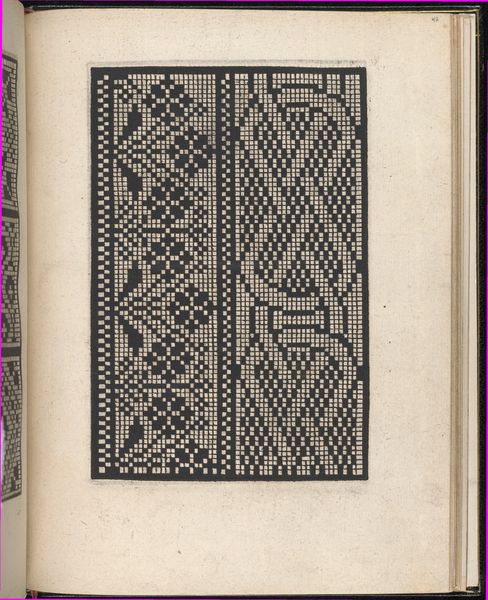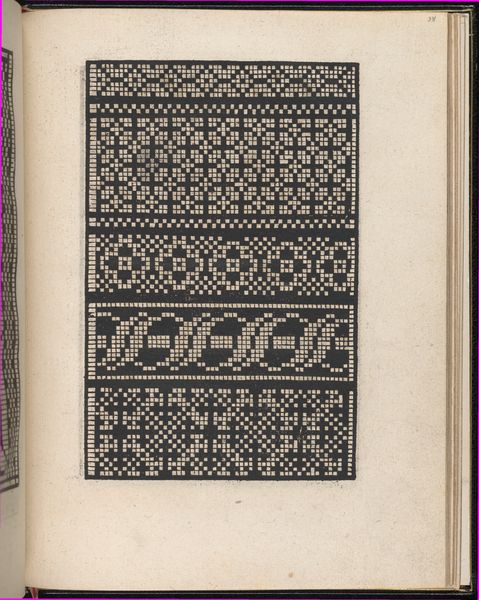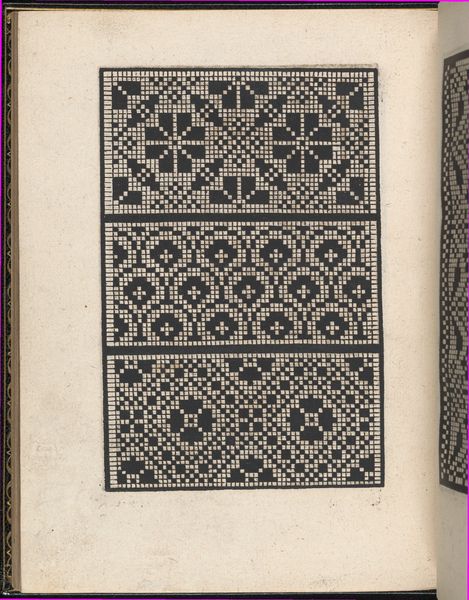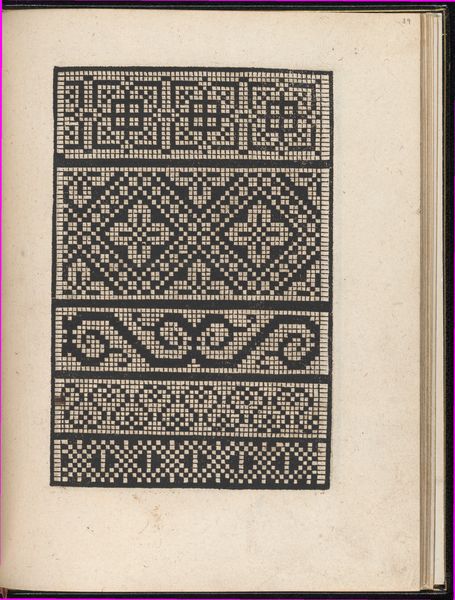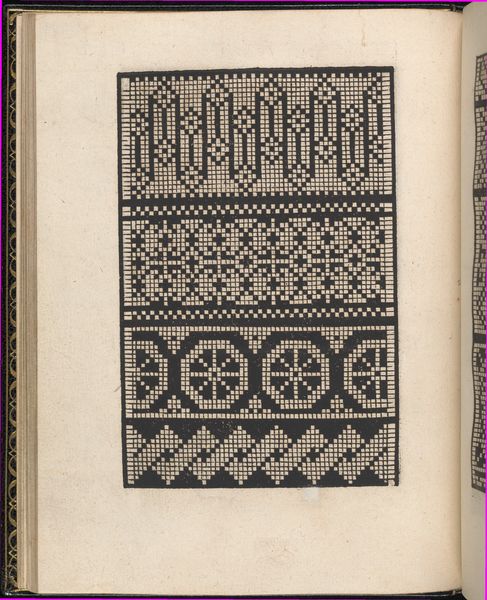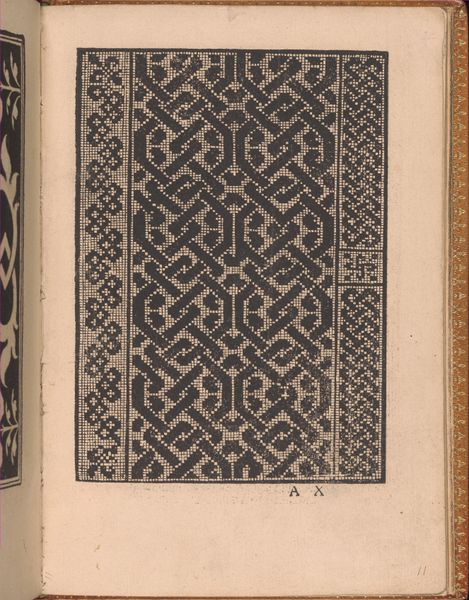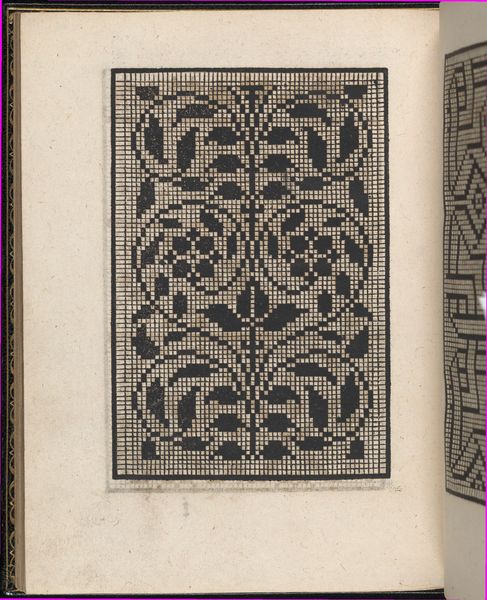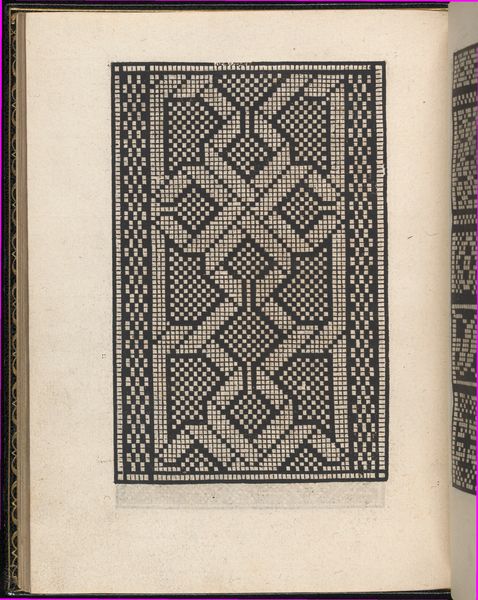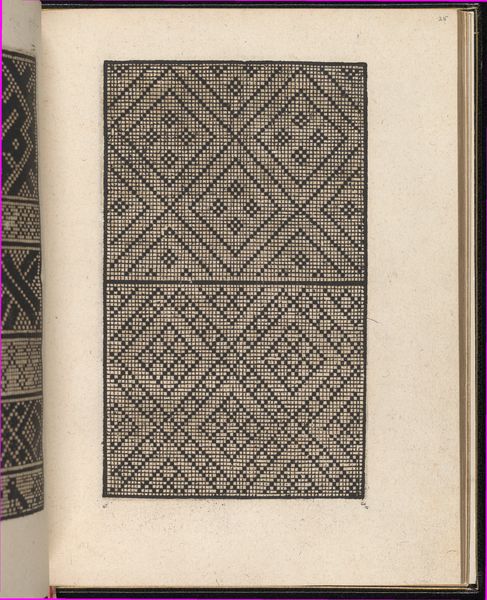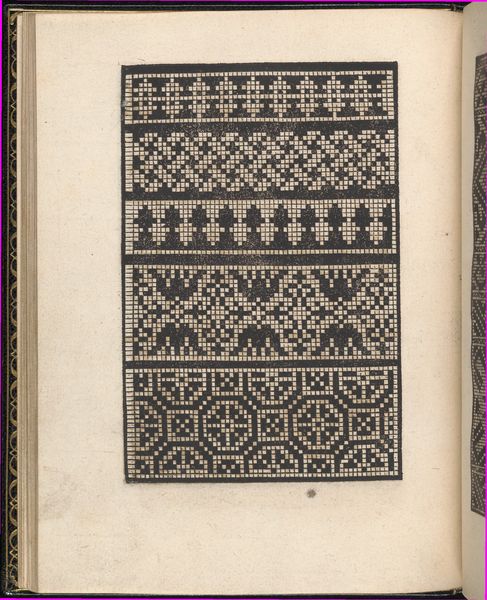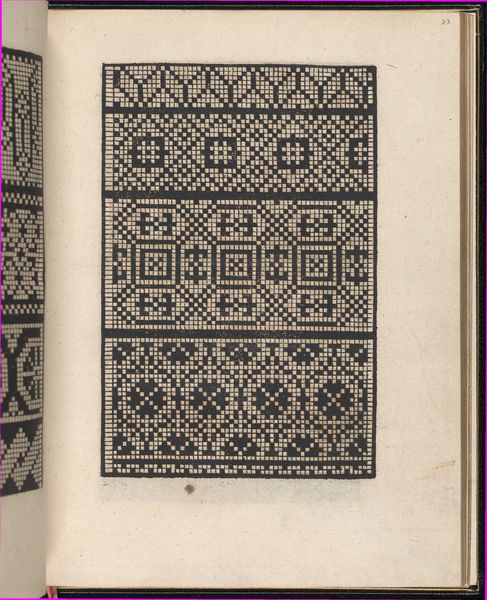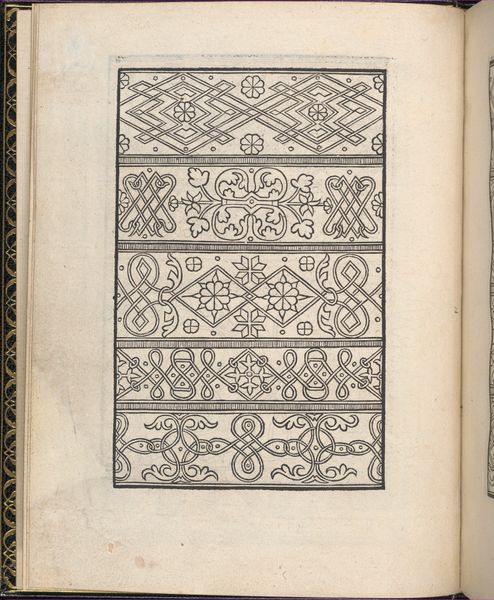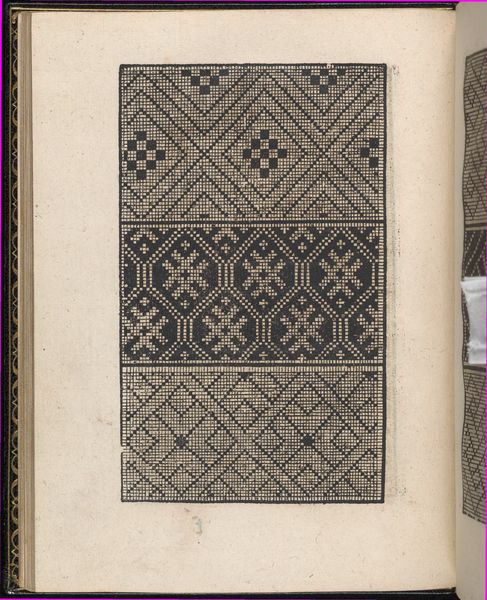
Page from Ein new kunstlich Modelbuch...(Page 40r) 1544
0:00
0:00
drawing, print, paper, woodcut
#
drawing
# print
#
paper
#
11_renaissance
#
coloured pencil
#
geometric
#
woodcut
#
northern-renaissance
Dimensions: Overall: 7 11/16 x 5 7/8 in. (19.5 x 15 cm)
Copyright: Public Domain
Editor: This is a page from Peter Quentel's "Ein new kunstlich Modelbuch...", dating back to 1544. It seems to be a woodcut print on paper, filled with geometric patterns. I’m struck by the rigid geometry and the almost mathematical feel of the designs. How do you interpret this work? Curator: I see this page as more than just a collection of patterns; it's a testament to the role of women and the decorative arts in Renaissance society. Model books like these were instrumental in disseminating designs for embroidery and lacework, primarily produced by women. We need to ask ourselves: how did this seemingly simple book function as a form of female agency within a patriarchal society? Editor: That's a really interesting point. I hadn’t thought about the gendered aspect of it. Were these patterns meant to be subversive in any way, or purely decorative? Curator: Subversion might be too strong a word, but consider this: in a period where women's creative expression was often confined to the domestic sphere, these books provided a channel for both artistic and economic empowerment. The act of creating these intricate designs, replicating and adapting them, allowed women to participate in a broader visual culture. Also, remember the cross-stitch in these patterns. Does that signify a connection to any belief systems of that era? Editor: So, you’re saying that something as seemingly simple as a pattern book was part of a larger dialogue about gender roles and creative expression? Curator: Exactly. And let's also remember the social and economic stratification inherent in access to these books and materials. Whose stories are amplified, and whose are silenced within these patterned pages? Editor: I see. That gives me a lot to think about. It shifts my perspective from just admiring the patterns to considering the lives and social context of the women who used them. Curator: Indeed, art isn't created in a vacuum. This seemingly simple pattern book opens a window onto the complex social fabric of the Renaissance. Now, think about its impact on today's design and culture! Editor: Right. It all becomes so much more relevant when you consider the human element, doesn’t it? Thanks!
Comments
No comments
Be the first to comment and join the conversation on the ultimate creative platform.
